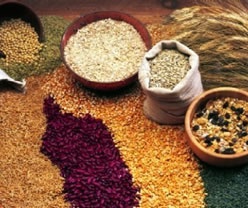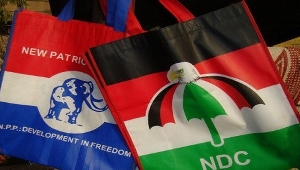Business News of Monday, 8 October 2012
Source: thebftonline
Food crisis looms

Sub-Saharan Africa, a region that depends largely on food imports, appears to be on the verge of a serious food crisis as unprecedented hot and dry summer conditions have led to reduced maize and wheat yields in the United States, Russia and Eastern Europe.
Food-price hikes have been witnessed across the globe. Indeed, the UN Food and Agricultural Organisation (FAO) announced last week that food prices rose slightly in September, approaching levels reached during the global food crisis in 2008.
The World Bank has also said that its Food Price Index soared by 10 percent in July compared to a month earlier. Over the same period, prices of maize increased by almost 25 percent and wheat prices surged by around 30 percent.
“The recent spikes in international food and grain prices could have negative implications for sub-Saharan Africa,” the World Bank warned.
Whilst it is still unclear what the implications of these spikes could be for the region, the high proportion of expenditures on food, high rates of malnutrition and the recurrent crisis and insecurity -- particularly in the Sahel region -- are enough reason for increased concern and monitoring, the bank said.
Aside from the external factors, the presence of desert locusts and ongoing conflict in the Sahel region of West Africa have also been linked to the risk of a food crisis in the region.
In its April issue of Africa’s Pulse, the World Bank mentioned countries like Mali and Niger as already suffering from locust infestation and said there is potential for the swarm to move to neighbouring countries such as Mauritania and Chad.
“The impact of this latest food-price increase in local markets across Africa is difficult to determine as current trends show significant variation in domestic prices across the region. In West and Central Africa, prices of cereals are still at record high levels owing to low production in 2011. However, better rains in 2012 have caused prices in the coastal countries to decline...” the bank said in the October edition of Africa’s Pulse.
A recent report by the FAO and USAID’s Famine Early Warning System Network lists 14 countries as being particularly vulnerable to the recent food-price increase. In many of these countries, maize and wheat provide 20% or more of the average household’s caloric intake. For Lesotho, the figure is as high as 69% and for Malawi it is 52%.
In Ghana, rice remains a major staple in particularly urban households which have a taste for imported rice. The country’s own self-sufficiency rate of rice is estimated at 33%. A huge chunk of the rice the country consumes is therefore imported.
Information on the National Rice Development Strategy (NRDS) for Ghana reveals that the per capita rice consumption in Ghana is currently 38 kg, and this is expected to rise to 63kg in 2015 -- giving an aggregate demand of 1.68mn metric tonnes.
Ghana's demand for rice hovers around 700,000 metric tonnes, but the local Ghanaian rice farmer is able to produce only 150,000, leaving a deficit of 550,000 metric tonnes.
In 2005, the total rice consumption of Ghana amounted to between 450,000 and 500,000 metric tonnes. The Greater Accra and Ashanti Regions were the largest consumption areas, sharing 25% and 21% of the total rice consumption respectively.
Figures from the Customs Division of the Ghana Revenue Authority indicate that between January 2005 and October 2010 Ghana’s rice imports were as varied in types as were the sources from abroad, spanning continents worldwide.
Thailand, Vietnam, United States and Côte d’Ivoire led the pack, with volumes ranging from 68,485,826 up to 912,176,312 metric tonnes. The cost, insurance and freight (CIF) of the merchandise fell between GH¢26,615,312.41 and GH¢516,482,292.26, while import duties and other charges paid amounted to between GH¢7,130,712.94 and GH¢135,808,590.83.
In total, the volumes of rice imported for immediate consumption (that is, what is cleared at the ports and frontier stations upon payment of duties as against what is imported, bonded and warehoused for clearance at a later time) over the period amounted to 2,435,506,359 metric tonnes in weight, at a total CIF value of GH¢1,216,206,460.67, while GH¢328,032,600.89 was paid as government taxes.
Agriculture is the backbone of Ghana's economy, and smallholder farmers represent about 80 percent of total agricultural production.
According to the Alliance for a Green Revolution in Africa (AGRA), despite overall strong economic growth over the past decade, the agricultural sector in Ghana has declined from 51 percent to 36 percent of GDP.
The rural poor now account for almost three-quarters of all Ghanaians who live below the poverty line. Smallholder farmers, whose farms average just 1.2 ha, currently have limited opportunities to prosper.
The major obstacles faced by Ghana's smallholder farmers include farmers' access to good seeds, fertiliser, and sustainable farming practices; to credit and crop storage; to markets and to strong farmer-based organisations.










